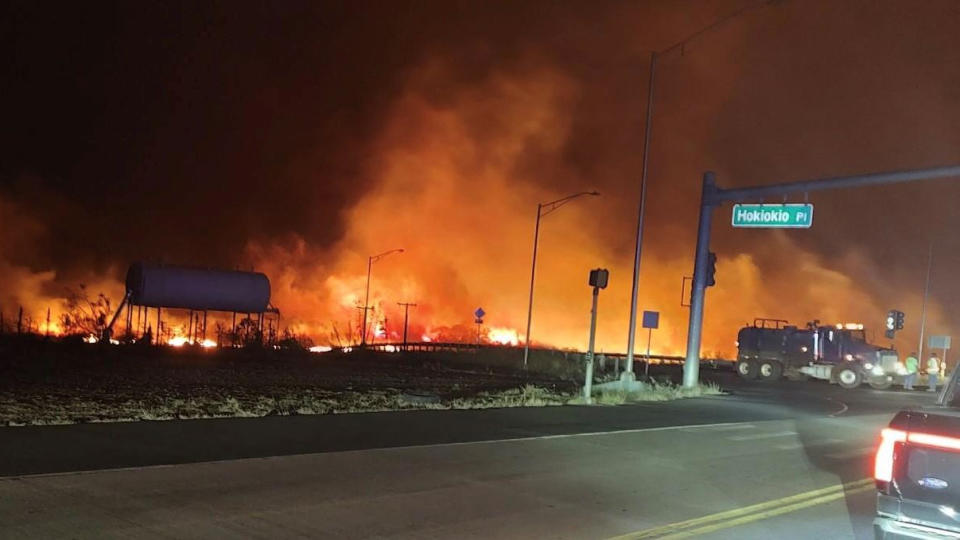As Maui reopens, Hawaii's leading banks brace for post-fire challenges

The August wildfires that scorched the Hawaiian island of Maui killed dozens of people and destroyed thousands of structures. They stalled travel to the island and infused a heaping dose of uncertainty into the tourism-driven Hawaiian economy.
The devastating blazes were brought under control late last summer, but Wednesday marked Maui's first day of full reopening to tourism following months of cleanup and recovery efforts. That milestone was the product of a three-phase effort by community leaders that began in early October and led to an all-clear for hotels and other tourist destinations to welcome visitors.
Executives at Hawaii's biggest banks — the $23.5 billion-asset Bank of Hawaii and the $25 billion-asset First Hawaiian, both based in Honolulu — said during late-October earnings calls that it was premature to gauge the economic fallout from the fires.
Though third-quarter profits fell 9% at Bank of Hawaii and nearly 16% at First Hawaiian, the final analysis of the impact on the island and the banks themselves will depend on how quickly tourism volumes return and how much visitors spend during the usually active winter months ahead, the executives said.
"It is a very difficult situation. It is something we'll have to work through as a community over the next several years," said First Hawaiian Chairman and CEO Robert Scott Harrison, whose company lost one branch in the fires. "But the good news is our employees and retirees are safe. A number of them did lose their homes, and, certainly, we're outreaching to them to see how we can help."
It is "too early to really determine the impact of the fires on the economy of Maui or the state of Hawaii, but we do expect over time the rebuilding activity will spur economic stimulus for that area along with an eventual return of visitors," Harrison added. "We don't think that will happen overnight. We think there will be a slower return of tourists to Maui over time."
Bank of Hawaii Chairman and CEO Peter Ho echoed those comments. His bank also lost a branch in the fire. "The recovery of Lahaina" — the hardest hit community — "will take both time and patience. Bank of Hawaii intends to be there every step of the way."
According to public data, after the Maui fires on Aug. 8, statewide tourism declined notably. Total visitor arrivals in August were 7% below the same month of 2022, and visitor spending was down 9%. Maui's tourism industry activity and revenue plunged in August.
"Maui experienced a severe economic disruption in the wake of the wildfires. Visitor arrivals plunged by nearly three-quarters, as travelers responded to the fires' horror and early appeals to stay away," a team of economists at the University of Hawaii wrote in a report in September. "Maui lost more than $13 million of visitor spending each day in the weeks following the fire."
That noted, bankers said insurance payments and federal emergency funds have begun to flow into Maui to support rebuilding efforts and, as this happens, deposit levels are likely to climb. Property owners tend to park insurance proceeds in banks until needed to pay for construction and other work.
Both First Hawaiian and Bank of Hawaii reported increased deposits during the third quarter and virtually no loan growth. Loan demand softened on the islands, as in many U.S. markets, as interest rates have soared over the past two years. But executives at both banks predicted that in coming years homeowners and businesses are bound to borrow more to complete renovations or pursue expansions on top of rebuilding lost properties. This could boost loan volumes next year and beyond, particularly if interest rates level off.
In the meantime, the Hawaiian economy, which rebounded quickly from the 2020-2021 pandemic lull, is performing well overall, the bankers said. State data shows a statewide seasonally adjusted unemployment rate in September of 2.8%, compared with the national rate of 3.8%. The tourism industry on the whole excelled during the first eight months of 2023, with total visitor arrivals up 8%, and total spending up 10%, from the same period in 2022.
As data for the fall months comes out, bankers expect to see lingering impacts from the fires. But, as Ho put it, "over the next several months, we're hoping to see a trajectory towards more normalization again."
Harrison agreed. "I do believe you will start to see activity start to come back over the holidays, maybe not as soon as Thanksgiving, but probably over the Christmas and New Year's holidays," he said. "That's an estimate on my part. That's not an official forecast … but that just gives people, individuals time to think about that. The pace of recovery and taking care of things on the ground in Lahaina, everybody would like it to move faster, but there is a pace that this goes at."
Bank of Hawaii reported third-quarter net income of $47.9 million, or $1.17 per share, compared with $52.8 million, or $1.28, a year earlier.
First Hawaiian reported net income of $58.2 million, or 46 cents, down from $69 million, or 54 cents, a year earlier.
Both banks reported higher funding costs and lower net interest income that curbed earnings compared with a year earlier.
